Capriate, 28.2.2018
In addressing the subject that was proposed to me, I chose a literary genre that makes the participation of the listeners more active and as a consequence makes their listening to this paper less burdensome. When entrusting myself to my imagination, it was spontaneous for me to think of a meeting of a group of religious and lay people connected with the Order of Camillians, but without attributing to them special personal characteristics. Through their contributions, I have sought to give expression to the many voices that circulate as regards the subject that was entrusted to me.
The animator of the group, Fr. Girolamo, rapidly introduced the meeting, pointing to the subject that was to be discussed – ‘Creative Faithfulness to the Camillian Charism’. Referring to the methodology of Scholastic teachers, he dwelt for a while on the explicatio terminorum, the explanation of terms.
At a lexical level, he said, the first official document of the Church that used the phrase ‘creative faithfulness’, when referring to charisms, was the apostolic exhortation Vita Consecrata of John Paul II (n. 37). ‘Creative faithfulness’ translates in a new form the word ‘updating’ which goes back to the middle of the last century. Indeed, this term was coined on 27 June 1949 during the preparatory session of the international congress of the ‘States of Perfection’ that was celebrated in Rome in December 1950. John XXIII and the Second Vatican Council then adopted it. ‘Creative Faithfulness’, therefore, indicates the dynamic of a charism which is called to express itself in always new forms, ones that are required by socio-cultural, ethical and religious changes, and which makes us think of the Spirit, in a dynamic movement that is always new. This is not only a matter of retrieving the early form of a charism – it is also question of projecting it into the present with an outlook on the future; the continuity of a charism in the discontinuity of historical situations.
After a short pause Fr. Girolamo added: “Like all the other Orders and Congregations, ours is also called, to put it as one sociologist has done, to connect together our roots and our wings, that is to say to conjoin tradition and innovation harmoniously. In the view of this author, the roots symbolise tradition and the wings refer to innovation and to the making of projects. Roots without wings lead to conservatism and to the maintenance of the status quo; wings without roots lead to utopia, that is to say to no place”.
“As regards the term ‘charism’”, he said, looking at the little group, “I believe that special explanations are not required”. “Really”, observed Beatrice, a young woman of the Lay Camillian Family, “I would like to have another look at the meaning of this term because in our meetings there is not always a uniformity of views about this word”.
Fr. Girolamo referred the matter to Fr. Elpidio who did not hesitate to speak and spelt out his words in a careful way: “Theologians’, he said, “agree in seeing a charism as ‘a presence and gratuitous, free and victorious manifestation of the Holy Spirit, seen as the living principle of unity and at the same time plurality in the concrete and historical existence of the individual and the community, with a view to the building up of the Church, understood as the spiritual communion of the faithful in their diversity of communion’”. After this precise but also rather complex statement, Fr. Elpidio went on as follows: “Amongst the charisms by which the Spirit animates and guides the Church, consecrated life has a special place. This is a gift of the Lord, directed towards igniting and sustaining in the ecclesial community the fervour of charity and a dynamic towards holiness. The explicit recognition of religious life as a charism occurred only after the Second Vatican Council. The application of the term ‘charism’ to religious life, however, took place in an explicit way only in the literature that followed the Second Vatican Council. Paul VI was the first to speak about this and he did so in the year 1971.
The charism of consecrated life is expressed through very diversified practical forms. Indeed, the ways of embodying the common charism of the evangelical counsels are numerous. This variety 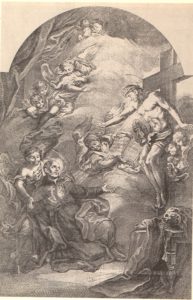 of charisms allows a more complete expression of the riches of persons and the action of Jesus Christ as well as a more effective cooperation in the mission of the Church. This is the goal towards which the variety of religious Institutes tend. Their Founders, therefore, were the bearers of a special gift or charism that they then transmitted to their Congregations. This is a gift that was described in the document Mutuae Relationes as an ‘“experience of the Spirit,” transmitted to their disciples to be lived, safeguarded, deepened and constantly developed by them, in harmony with the Body of Christ continually in the process of growth’ (n. 11). The charism of the Founder is a gift that is ‘personal because it transforms the person of the Founder, preparing him for a special vocation and mission in the Church that is collective-communitarian because of the fact that it involves a number of people to implement, in a historical sense, the same divine project; and, lastly, that is ecclesial because through the Founder and his community it is offered to the Church for her dynamic edification’.
of charisms allows a more complete expression of the riches of persons and the action of Jesus Christ as well as a more effective cooperation in the mission of the Church. This is the goal towards which the variety of religious Institutes tend. Their Founders, therefore, were the bearers of a special gift or charism that they then transmitted to their Congregations. This is a gift that was described in the document Mutuae Relationes as an ‘“experience of the Spirit,” transmitted to their disciples to be lived, safeguarded, deepened and constantly developed by them, in harmony with the Body of Christ continually in the process of growth’ (n. 11). The charism of the Founder is a gift that is ‘personal because it transforms the person of the Founder, preparing him for a special vocation and mission in the Church that is collective-communitarian because of the fact that it involves a number of people to implement, in a historical sense, the same divine project; and, lastly, that is ecclesial because through the Founder and his community it is offered to the Church for her dynamic edification’.
The charism that Camillus received from God is referred to in the Constitution of the Order of Camillians. In this text it is said that this is a gift that our Institute received from God through the mediation of St. Camillus to bear witness to the world to the ever-present love of God for the sick (Constitution, n. 1). The words of the Constitution appropriately capture what this saint experienced and achieved during the journey of his existence”.
When Fr. Elpidio seemed to have finished what he wanted to say, Fr. Alfonso began to speak. “Usually”, he said, “when one speaks about creative faithfulness to the Camillian charism one refers to the ways to which our ministry is called to respond to the new needs of people. Does this tendency not run the risk of reducing the influence of our charism solely to one aspect of the life of a Camillian religious, that is to say to his ministerial activity, as though it was not called to influence the rest of his person?”



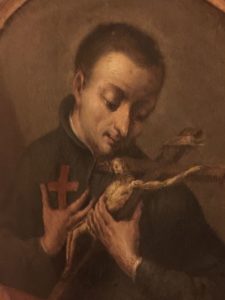






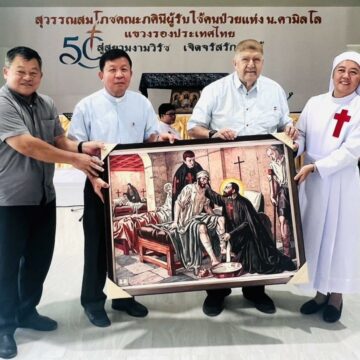
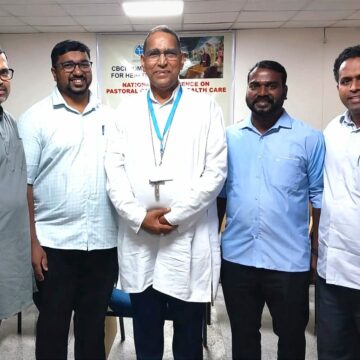


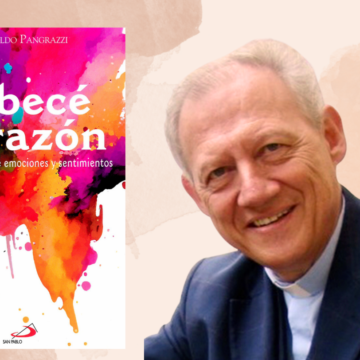
Camillians on Facebook
Camillians on Twitter
Camillians on Instagram